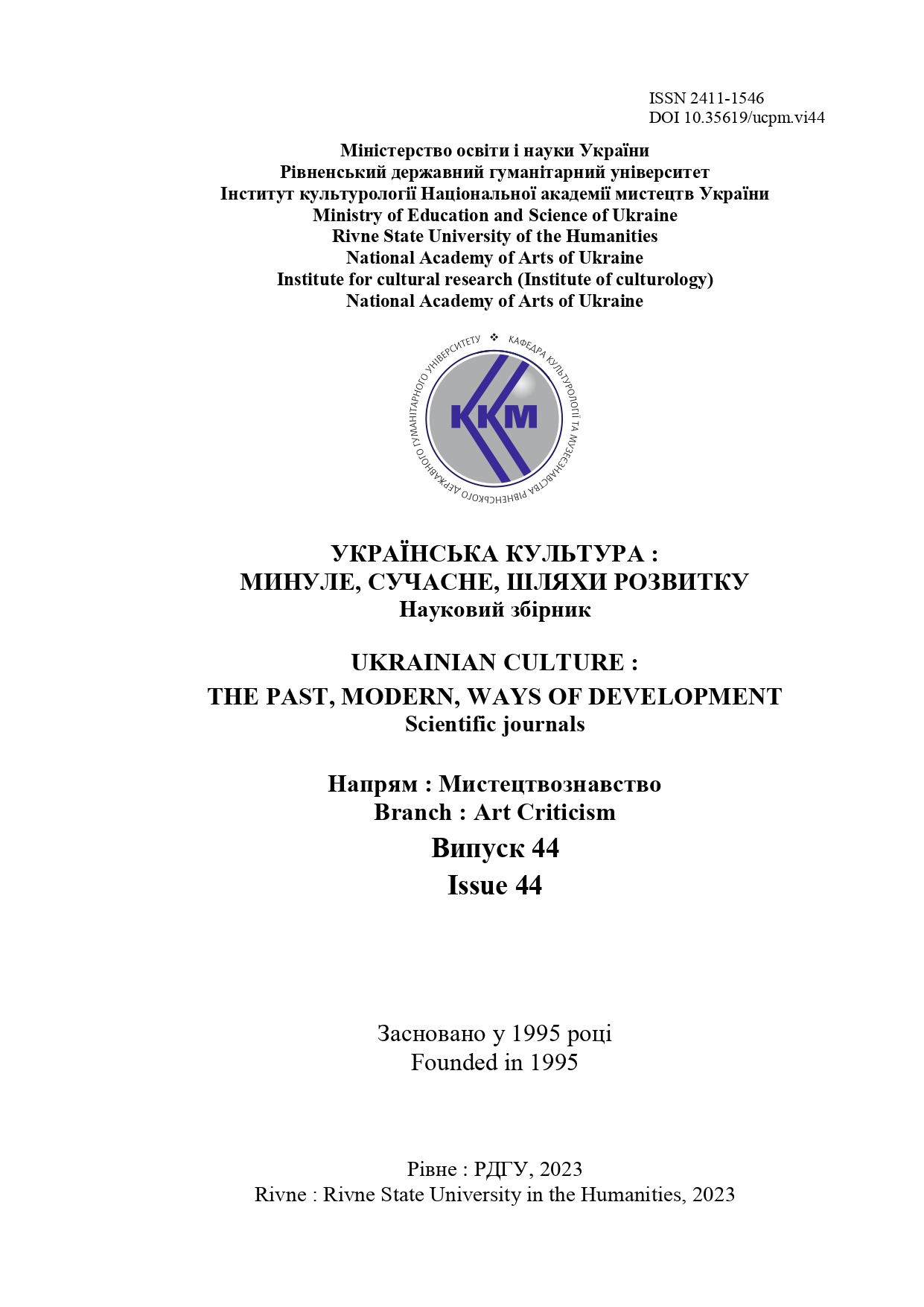«НЕОМІФ» У ФІГУРАТИВНОМУ ДЕКОРІ ІНТЕРʼЄРІВ ТА ЕКСТЕРʼЄРІВ ХРАМОВИХ ТА ГРОМАДСЬКИХ СПОРУД СХІДНОЇ ГАЛИЧИНИ ПЕРШОЇ ТРЕТИНИ ХХ СТ.
Анотація
Проаналізовано фігуративні образи у монументальній скульптурі та монументальному живописі Східної Галичини першої третини ХХ ст. Користуючись методами опису, аналізу та систематизації віднайдених оздоб у декорі храмових споруд, житлових та громадських будівель регіону, виділено за рядом ознак кілька типологічних груп антропоморфних образів. Дані образи стали основою для проведення порівняльного аналізу традиційних міфологічних груп персонажів та формування нових міфогем, притаманних світогляду та мистецтву першої третини ХХ ст. Вони наділені характеристиками героїв різного спрямування та функціонального призначення і мали важливу роль у творенні нового образу Людини ХХ ст. на території Східної Галичини. Насамперед, вони мають націєтворчий характер, а також є проявом складових добробуту, розвитку та прогресу регіону.


